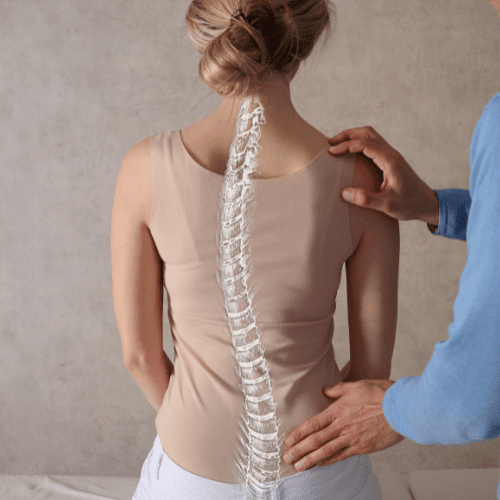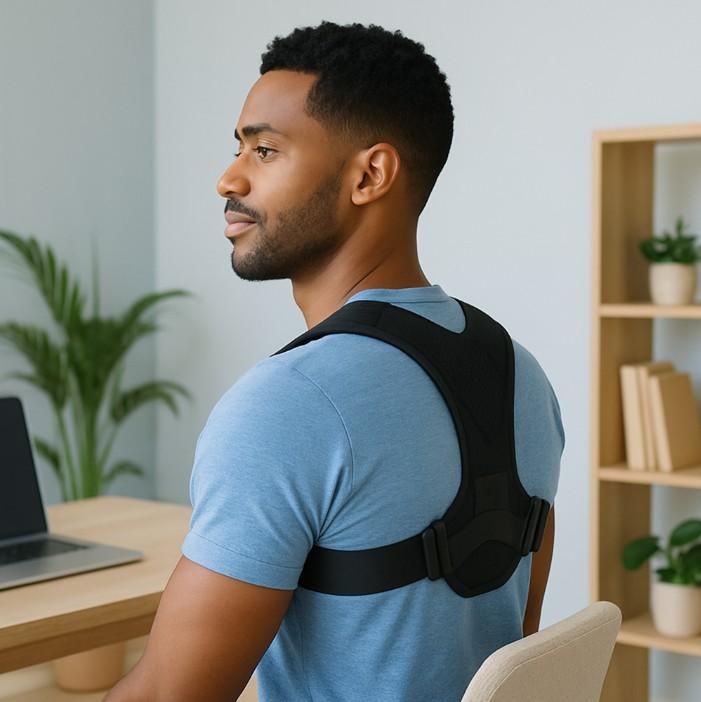What is scoliosis of the spine?
There are two main types of scoliosis: idiopathic scoliosis, which occurs for no known reason, and structural scoliosis, which is caused by a birth defect or a problem with the spine's structure.
Symptoms of Scoliosis
The most common symptom of scoliosis is a curvature of the spine that is visible when standing up straight. Other symptoms may include uneven shoulders, a raised hip, or a protruding shoulder blade. Scoliosis can also cause back pain, difficulty breathing, and fatigue.
Diagnosis of Scoliosis
Diagnosis of scoliosis typically involves a physical examination and an X-ray to assess the degree of curvature. The degree of curvature is measured using the Cobb angle, which is the angle formed by the intersection of two lines drawn perpendicular to the top and bottom of the curve. A curve of 10 degrees or more is considered to be scoliosis.
Treatment For Scoliosis
Treatment for scoliosis depends on the severity of the curve, the patient's age, and their overall health. For mild scoliosis, treatment may involve observation and regular check-ups to ensure the curvature is not getting worse. More severe cases may require treatment to prevent the curve from getting worse.
Braces
Bracing is a common treatment option for adolescents with scoliosis. The goal of bracing is to slow or stop the progression of the curve while the spine is still growing. Bracing can be uncomfortable, but it is generally well-tolerated and can be effective in preventing the need for surgery.
Surgery
Surgery is typically reserved for severe cases of scoliosis that cannot be treated with bracing or when the curve is causing significant discomfort or other health problems. There are several different surgical options for scoliosis, including spinal fusion and instrumentation. These procedures involve attaching metal rods to the spine to help straighten it and hold it in place while it heals.
After surgery, patients will typically need to wear a back brace for several months to help support the spine as it heals. Physical therapy may also be recommended to help restore strength and flexibility to the back muscles.
Other Non-Surgical Treatments
In addition to these treatments, there are also some non-surgical options that may help manage the symptoms of scoliosis. These include exercises to strengthen the back muscles, chiropractic care, and acupuncture. Massage therapy and heat/cold therapy may also be helpful in reducing pain and discomfort.
Talk To Your Doctor
It is important to seek treatment for scoliosis as soon as possible to prevent the curve from worsening and to manage any associated symptoms. Early treatment can help prevent the need for more invasive interventions and improve the patient's overall quality of life.
If you or a loved one is experiencing any of the symptoms of scoliosis, it is important to speak with a healthcare provider. They will be able to evaluate your condition and recommend the most appropriate treatment options. With the right treatment, most people with scoliosis are able to live normal, active lives.
Adjustable Spinal Brace for Scoliosis Recovery
Relieve Scoliosis Pain with our Adjustable Spinal Brace
Product information
Product Review Score
4.51 out of 5 stars
57 reviewsDescription
Our Adjustable Spinal Brace for Scoliosis Recovery is the perfect solution for individuals suffering from scoliosis and seeking a way to alleviate pain and discomfort. With its customizable design and comfortable fit, this brace offers superior support and promotes proper spinal alignment for optimal recovery.
Product links




